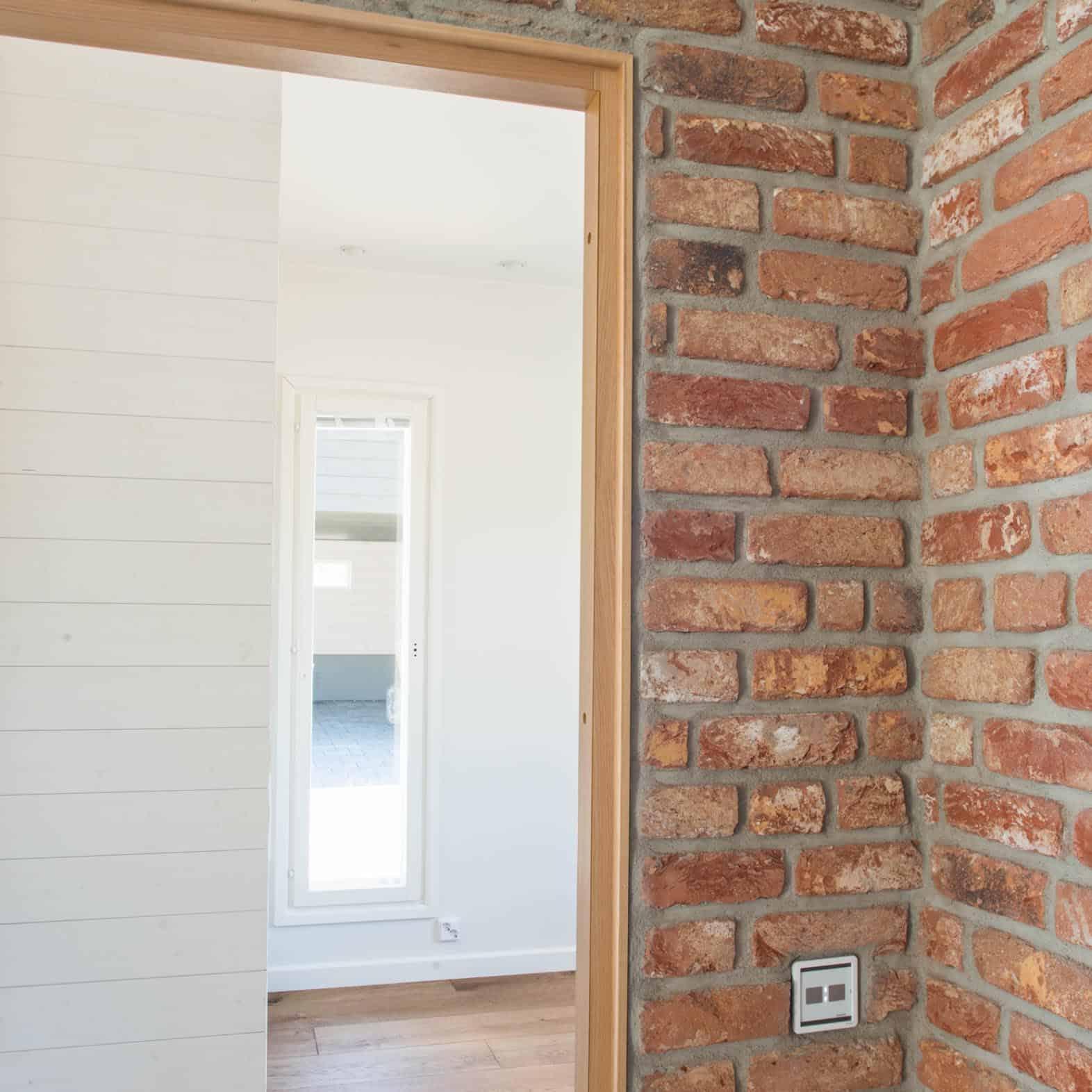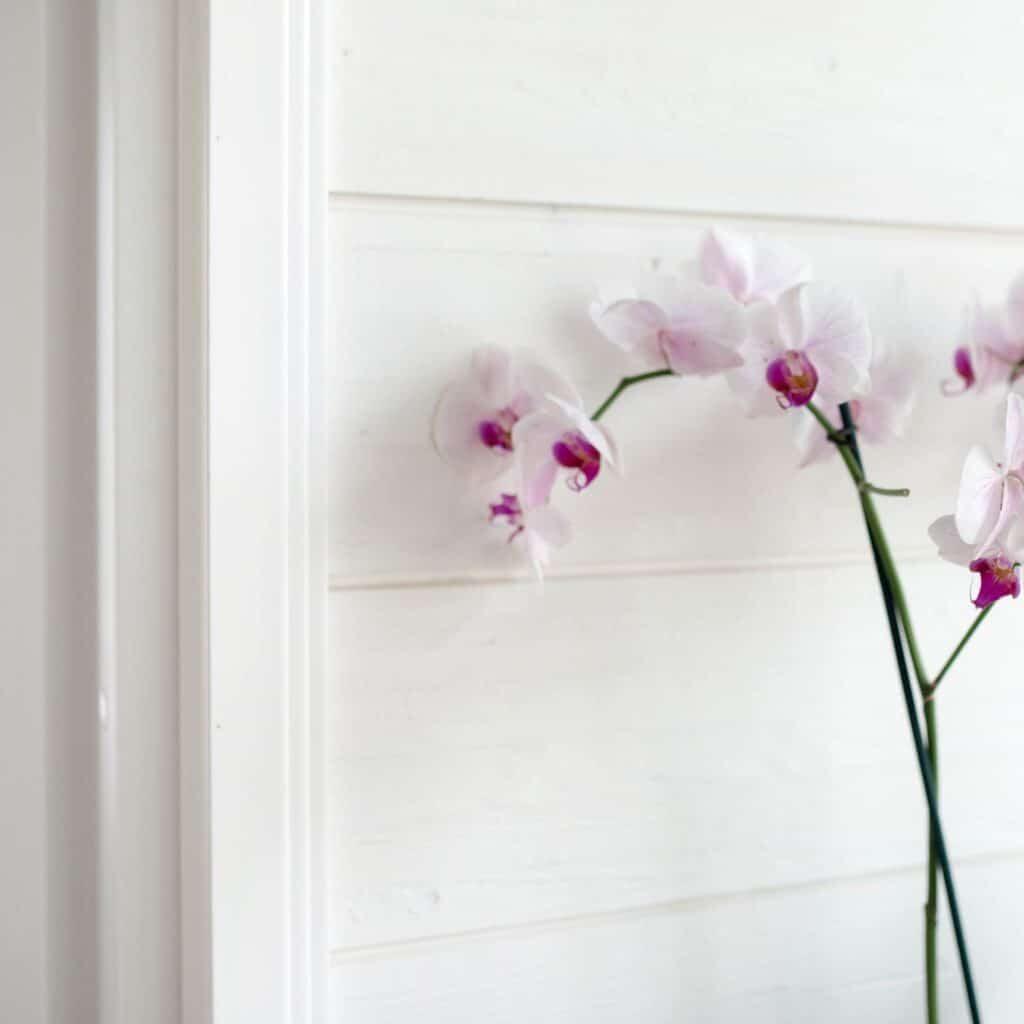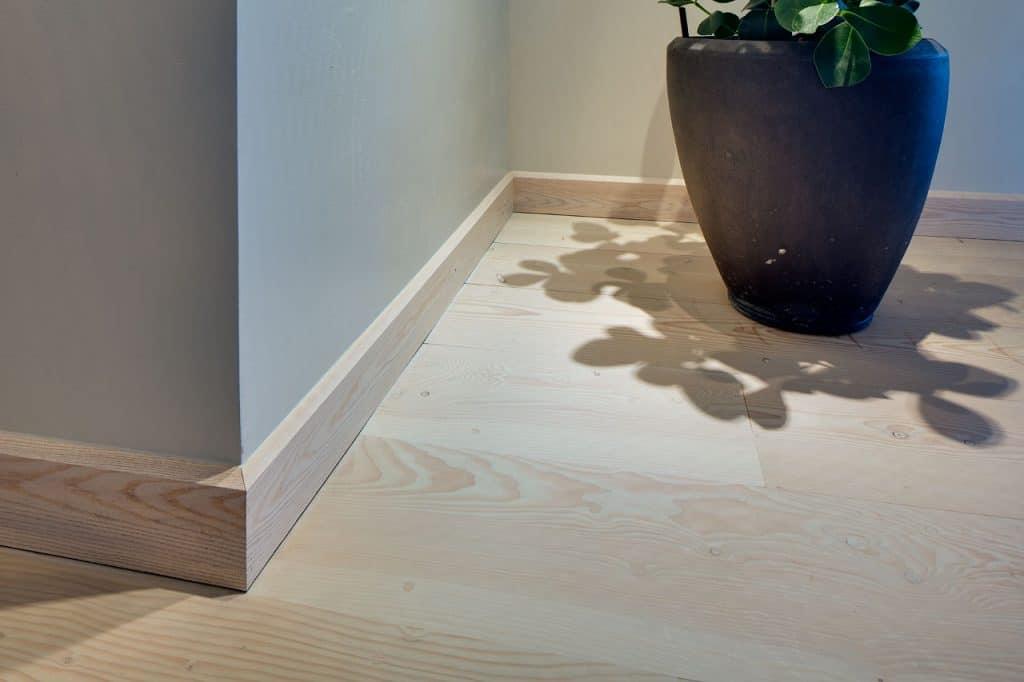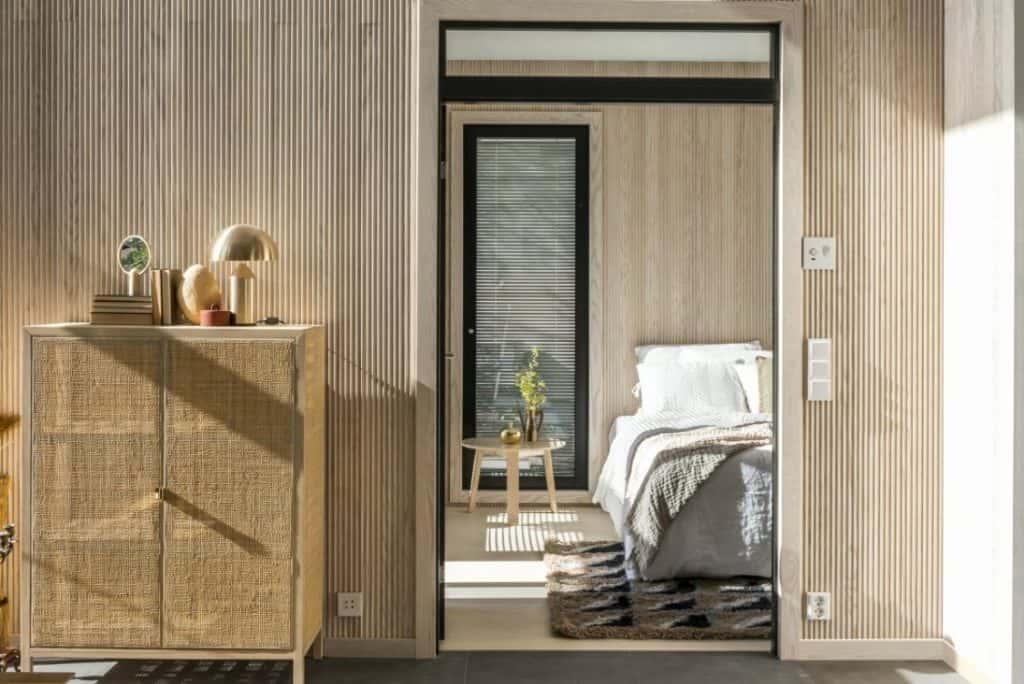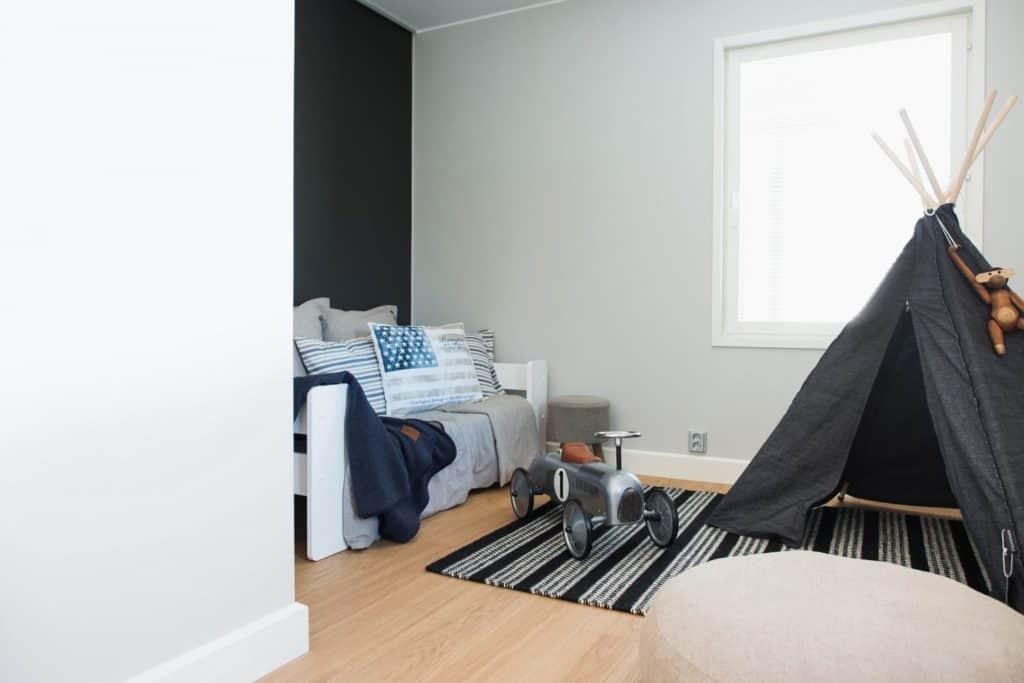The finishing touches to the interior are built using smooth wooden shelves. Stitching can be used to highlight details or to create sophisticated transitions between different materials. In addition to white interior lists, base / coverboard can be finished in the same colour as parquet, for example, or even made from the same material as the parquet. It is worth paying attention to the formal language of the mouldings. Straight, streamlined shapes support a modern, minimalist style, while decorative, rounded mouldings bring a softness to the interior. Detailed mouldings are a great way to finish off a stylish wooden interior.
Pay attention to the shape and tone of the list
Interior lists are available in several different formats. From minimalist straight mouldings, to modern old-style mouldings, to mouldings with lots of curves.
Wooden mouldings can be treated tone on tone with other surfaces. For example, floor mouldings treated in the same tone as parquet flooring will spread the width of the floor and act as a subtle transition between the wall material and the floor. Tinted wood flooring also has a parquet-like finish. Wood strips can also be made from the same material as parquet, such as ash or oak.
Tinted mouldings can also be used to create delicious details in the interior. The options are endless when it comes to shades. Pay attention to the colour codes of the surfaces. They can help you to reproduce the same lovely shades in different areas of your home. For example, trimming black doors with mouldings in the same shade will make the doors look consistent and there's no need to break up a clean decor by mixing several different shades. You can also use dark mouldings to add a bit of angularity to a light-coloured interior.
Blur blemishes and highlight different surfaces
Lists can be used to highlight details, but they also make installation easier. For example, mouldings can be used to neatly hide wall junctions with windows and doors. Mouldings can also be used to hide wall slopes, for example.
In the same space, very different lists can be used to either highlight or blur the details you want. A wide base / coverboard protects the wall from bumps, clearly separating the wall from the floor. At the same time, ceiling trims can be very unobtrusive and narrow, providing an interesting way to highlight the different surfaces in the space.
When you want to create a clean and uniform interior, you should use the same wood material for the mouldings as for the wall surfaces. This will give the wall surfaces a worthy continuation with real wood mouldings. There is no need to break the unity of the wall surfaces with white mouldings if they are made of the same material as the wall.
You can save on list material by getting a composite list, which can be used as both a cover list and a footer list. This avoids having to buy several different lists. Combination lists are available in collections such as Vana, Kumpu and Kinos.
Enduring the pulse in the midst of everyday life
It is worth being aware of the material in the lists. Interior mouldings are available in real wood or artificial mdf. Real wood mouldings are generally slightly more expensive than mdf mouldings, but are more durable and longer lasting in use. Wood is very resistant to minor knocks and its surface will not be damaged by, for example, a vacuum cleaner. In the event of mechanical damage, wooden mouldings are easy to sand and repaint.
